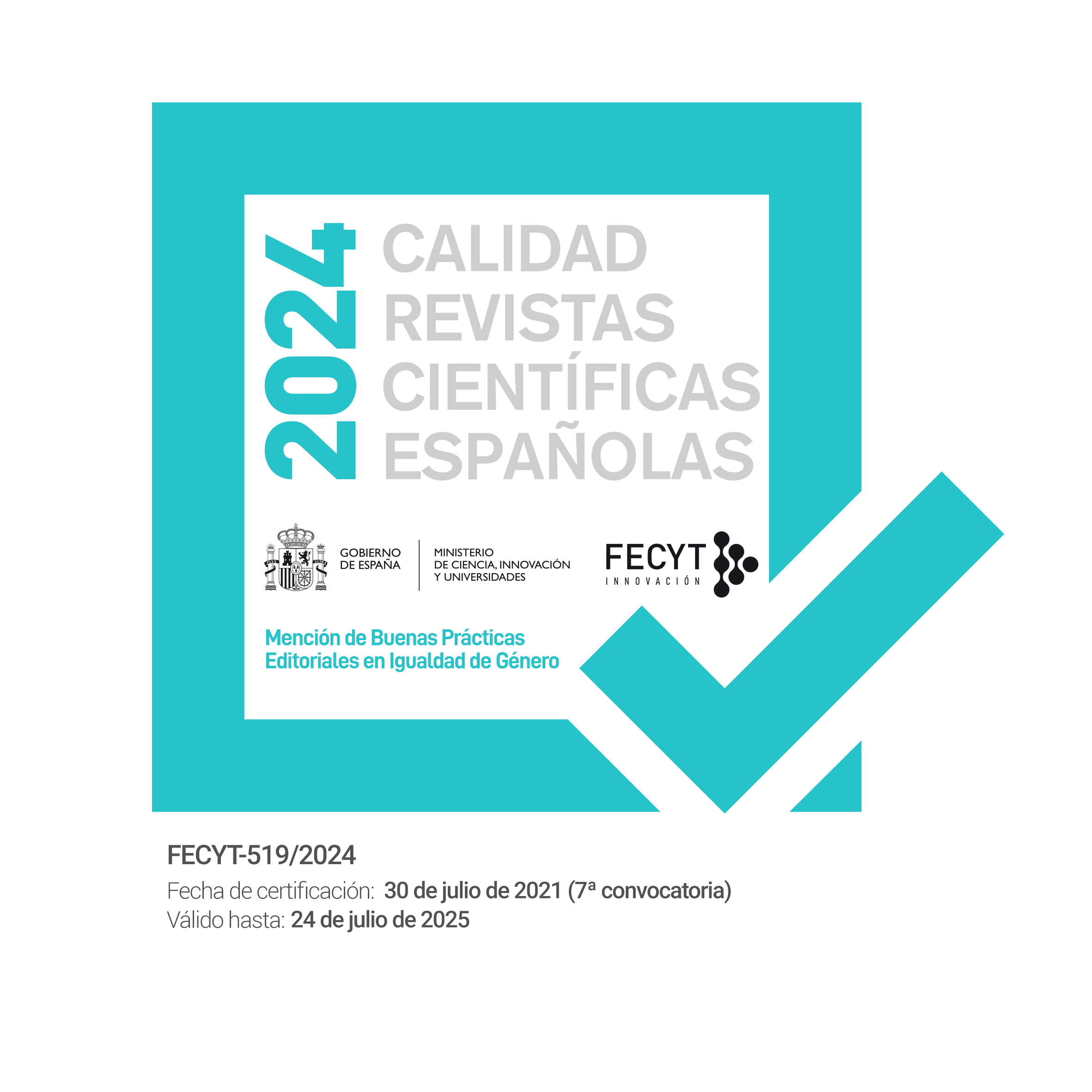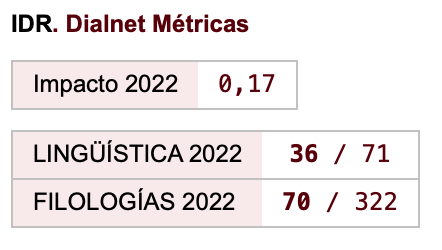Visual Prompts in Bilingual Education. Experience from a School in Texas
Keywords:
bilingualism, education, vision, L2 learning, English for Specific PurposesAbstract
The purpose of this article is to present three teaching activities and an evaluation proposal, in order to enhance science vocabulary learning in bilingual education contexts. It has been shown that the use of images is a natural and useful way of acquiring vocabulary in a L2 (Comesaña et al., 2009; Mayén, 2013). Indeed, technical and scientific vocabulary is often easily understood and remembered through the use of images and videos, either in regular education (Arnheim, 2013) or in a second language (Parkinson, 2012). The present study is based on the classroom observation made by a Science and Biology teacher in a special bilingual program for Mexican children in a public school in Texas (7th to 9th grade). It has been observed that the lack of knowledge in English is helpfully compensated through the use of visual prompts by the teacher. Thus, three teaching activities based on visual stimuli (word wall, video and dramatization) and an evaluation proposal based on images are presented and analyzed. Finally, the positive consequences of the use of visual stimuli in terms of students’ self- reliance, motivation and comprehension are considered.
DOI: 10.1400/229696
Downloads
References
Arnheim, R. (1986). El pensamiento visual. Barcelona: Paidós.
Baker, C. (1993). Fundamentos de Educación Bilingüe y Bilingüismo. Madrid: Cátedra.
Blasco Mayor, M. J. (2009). CALL-enhanced L2 Listening Skills - Aiming for Automatization in a Multimedia Environment. Indian Journal of Applied Linguistics, 35(1), 107-120.
Byers-Heinlein, K., Fennell, C. T. & Werker, J. F. (2013). The development of associative word learning in monolingual and bilingual infants. Bilingualism: Language and Cognition, 16(1): 198-205, doi: http://dx.doi.org/10.1017/ S1366728912000417.
Cataldi, Z., Lage, F., Pessacq, R. y Garcia Martinez, R. (1999). Revisión de Marcos Teóricos Educativos para el Diseño y Uso de Programas Didácticos, Actas del V Congreso Internacional de Ingeniería Informática. Departamento de Publicaciones de la Facultad de Ingeniería: Universidad de Buenos Aires, 172- 184.
Comesaña, M., Perea, M., Piñeiro, A. y Fraga, I. (2009). Vocabulary teaching strategies and conceptual representations of words in L2 in children: Evidence with novice learners. Journal of Experimental Child Psychology, 104, 22-33, doi:10.1016/j.jecp.2008.10.004.
Comesaña, M., Soarea, A. P., Sánchez-Casas, R. y Lima, C. (2012). Lexical and semantic representations in the acquisition of L2 cognate and non-cognate words: Evidence from two learning methods in children. British Journal of Psychology, 103: 378-392, doi:10.1111/j.2044-8295.2011.02080.x.
Dam Jensen, E. (2001). Realce del input oral por medio del video. En A.M. Gimeno Sanz, (ed.), Actas del XII Congreso Internacional de ASELE, Tecnologías de la Información y de las Comunicaciones en la Enseñanza de ELE. Valencia, 2001 (pp. 27-35). Valencia: Editorial de la Universidad Politécnica de Valencia.
DeKeyser, R. M. (2001). Automaticity and Automatization. In P. Robinson (Ed.), Cognition and Second Language Instruction (pp. 125-151). Cambridge: Cambridge University Press.
Dörney, Z. (1994). Motivation and motivating in the foreign language classroom. The Modern Language Journal, 78(iii), 273-283.
Ellis, N. C. (2001). Memory for language. In P. Robinson (Ed.), Cognition and Se- cond Language Instruction (pp. 183-205). Cambridge: Cambridge University Press.
Finegan, E. (1994). Language. Its Structure and Use. Orlando: Harcourt Brace. Galán Rodríguez, C. (2011). Homo loquens, homo virtualis. Revista de Estudios
de Juventud, 93, 11-26.
Gardner, H. (1987). La estructura de la mente: la teoría de las inteligencias múltiples. México: Fondo de Cultura Económica.
Gardner, R. C. y Lambert, W. E. (1972). Attitudes and Motivation in Second Language Learning. Rowley, MA: Newbury House.
Klinger, W. (1998). Card games for language learning. Academic Reports of the University Center for Intercultural Education, 4, 79-98.
Knapp, M. (1982). La comunicación no verbal. El cuerpo y el entorno. México: Editorial
Paidós.
Krashen, S. (1982). Principles and Practice in Second Language Acquisition. New York: Pergamon Press.
Kress, G. y van Leeuwen, T. (1996). Reading images: The grammar of visual design. London: Routledge.
Legros, D. y Crinon, J. (2002) (eds.). Psychologie des Apprentissages et Multimédia. Paris: Armand Colin.
Lertola, J. (2012). The effect of the subtitling task on vocabulary learning. En A. Pym y D. Orrego-Carmona (eds.) Translation Research Project 4 (pp. 61-70), Tarragona: Intercultural Studies Group, Universitat Rovira i Virgili.
López-Ozieblo, R. (2013). Reflections on the Use of Nonverbal communication in teaching Spanish to sino-speakers. Revista de Lenguas para fines específicos, 19, 309-328.
Luengo Bravo, A. (2011). Actuar per parlar. La dramatització com a instrument didàctic per a l’adquisició lingüística i la formació literària. Bellaterra Journal of Teaching & Learning Language & Literature, 4(1), 39-55.
Luján García, C. I. (1999). La motivación: Un factor relevante en el proceso de enseñanza/aprendizaje de lenguas extranjeras. Boletín Millares Carlo, 18, 269-278.
MacWhinney, B. (2001). The competition model: the input, the context and the brain. In P. Robinson (Ed.), Cognition and Second Language Instruction (pp. 69-90). Cambridge: Cambridge University Press.
Marangon, S. (2009). La glottodidattica ludica nell’insegnamento dell’italiano L2 ad adulti immigrati. Tesis doctoral no publicada. Venezia: Università Ca’ Foscari.
Marsh, D. & Frigols Martín, M. J. (2012). Content and Language Integrated Learning. The Encyclopedia of Applied Linguistics, doi: 10.1002/9781405198431. wbeal0190.
Marsh, D. & Wolff, D. (2007) (Eds.). Diverse Contexts-Converging Goals: CLIL in Europe, Frankfürt: Peter Lang.
Martínez Lirola, M. (2005). ¿Qué relación guarda la motivación con los proble- mas de disciplina durante la adolescencia en los programas de educación bi- lingüe en EEUU? Porta Linguarum, 3, 21-34.
Mayén, N. R. (2013). Effects of input enhancement and visual prompts in children’s l2 acquisition of Spanish Verbal morphology. Estudios de Lingüística Inglesa Aplicada, 13, 83-111, doi: http://dx.doi.org/10.12795/elia.2013.i13.03.
McCroskey, J. & McCroskey, L. (2006). Nonverbal communication in instruc- tional contexts. En I. Manusov, I. y M. L. Patterson (eds.), The SAGE handbook of nonverbal communication (pp. 421-436). Thousand Oaks, CA: SAGE Publications.
Molina, M. y Sampietro, A. (2014). Propuestas didácticas para el uso de Internet y de la pizarra digital en contextos de educación bilingüe. Manuscrito enviado para publicación.
Moreno Jaén, M. & Pérez-Basanta, C. (2009). Developing conversational com- petence through language awareness and multimodality: The use of DVDs. ReCALL, 21(3), 283-301.
Nation, P. (2001). Learning Vocabulary in Another Language. Cambridge: Cambridge University Press.
Nation, P. (2007). Vocabulary learning through experience tasks, Language Forum 33(2), 33-43.
Osborne, J. & Hennessy, S. (2003). Literature Review in Science Education and the Role of ICT: Promise, Problems and Future Directions. Futurelab series, Report 6. Disponible en: .
Parkinson, J. (2012). English for Science and Technology. En B. Paltridge y S. Starfield (Eds.), The Handbook of English for Specific Purposes. Chichester, UK: John Wiley and Sons, doi: 10.1002/9781118339855.ch8.
Pérez-Basanta, C. & Sánchez Ramos, M. M. (2004). ADELEX: Using Computer-Mediated Dictionaries online to enhance vocabulary acquisition. En Campoy Cubillo, M.C. y Safont Jordà, P. (Eds). Computer-mediated lexicography in the foreign language learning context (pp. 95-122). Castellón: Publicacions de la Universitat Jaume I.
Plastina, F. (2013). Multimodality in English for specific purposes: reconceptualizing meaning-making practices. Revista de Lenguas para Fines Específicos, 19, 372- 396.
Rheingold, H. (1991). Realidad virtual. Barcelona: Gedisa.
Richards, J. C. & Rodgers, T. S. (2001). Enfoques y métodos en la enseñanza de idio-mas. Cambridge: Cambridge University Press.
Ruiz Olabuénaga, J. I. y Ispizua, M. A. (1989). La descodificación de la vida coti-
diana: métodos de investigación cualitativa. Bilbao: Universidad de Deusto. Sampietro, A. (en prensa). Gli stili di apprendimento nella classe di lingua straniera
ad adulti. Valutazione e integrazione in aula. Revista Electrónica del Lenguaje, 1. Schmidt, R. (1992). Psychological mechanisms underlying second language
fluency. Studies in Second Language Acquisition, 14, 357-385.
Stenhouse, L. (1985). La investigación como base de la enseñanza. Madrid: Morata, 1987.
Swales, J. M. (1990). Genre Analysis. English in academic and research settings. Cam- bridge: Cambridge University Press.
Talaván Zanón, N. (2006). Using subtitles to enhance foreign language learning. Porta Linguarum, 6: 41-52.
Tapia, J. A. (1992). Motivar en la adolescencia: teoría, evaluación e intervención. Madrid: Universidad Autónoma de Madrid.
van Heuven, W. J. B. & Dijkstra, T. (1998). Orthographic Neighborhood Effects in Bilingual Word Recognition. Journal of Memory and Language 39, 458-483.
Williams, H. & Thorne, D. (2000). The value of teletext subtitling as a medium for language learning. System, 28, 217-228.
Downloads
Published
How to Cite
Issue
Section
License
Authors who publish with this journal agree to the following terms:
- Authors retain copyright and grant the journal right of first publication with the work simultaneously licensed under a Creative Commons Attribution License that allows others to share the work with an acknowledgement of the work's authorship and initial publication in this journal.
- Authors are able to enter into separate, additional contractual arrangements for the non-exclusive distribution of the journal's published version of the work (e.g., post it to an institutional repository or publish it in a book), with an acknowledgement of its initial publication in this journal.
- Authors are permitted and encouraged to post their work online (e.g., in institutional repositories or on their website) prior to and during the submission process, as it can lead to productive exchanges, as well as earlier and greater citation of published work (See The Effect of Open Access).

Revista de Lenguas para fines específicos is licensed under a Creative Commons Reconocimiento-NoComercial-SinObraDerivada 4.0 Internacional License.























